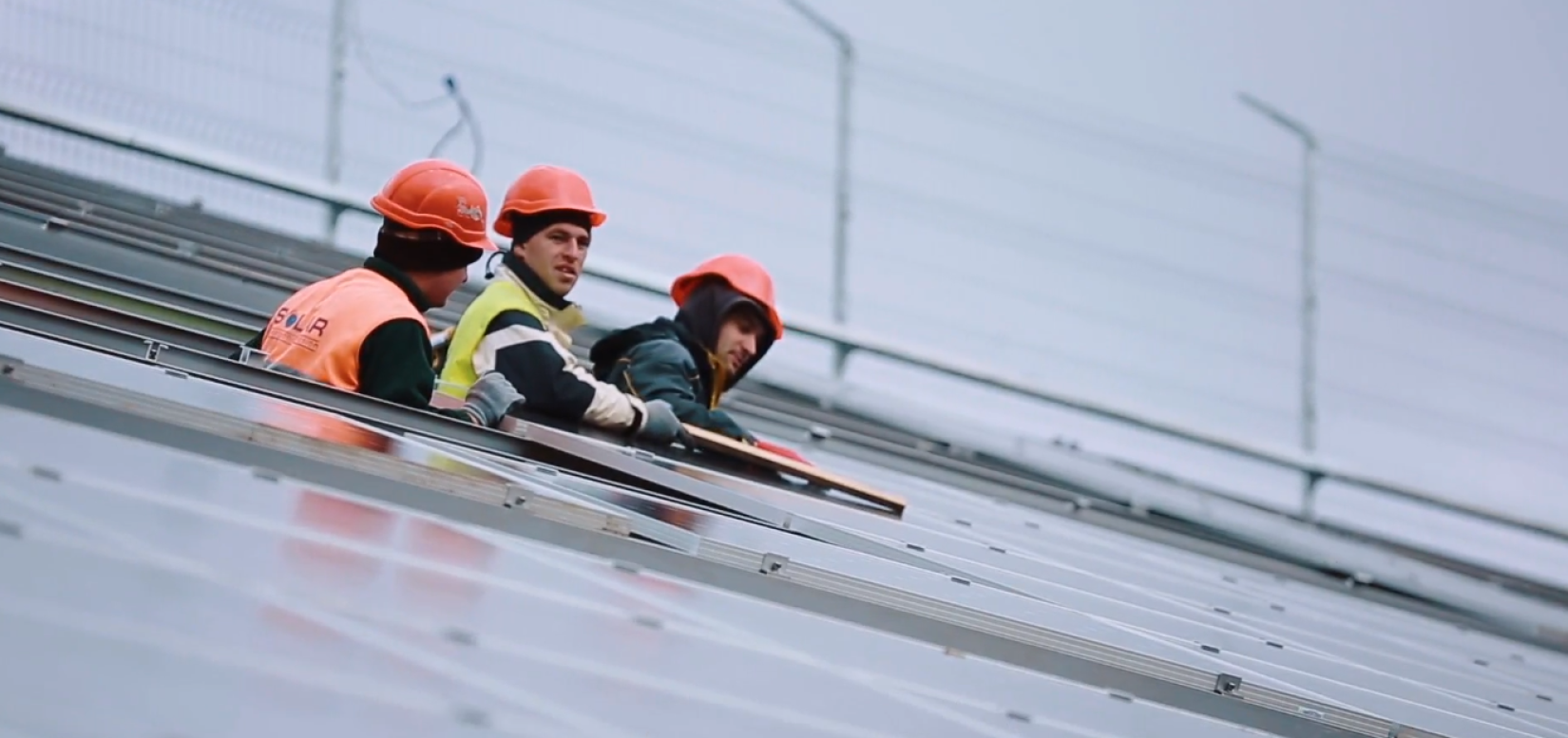Innovations Towards Energy Independence
14 July 2023
Approximately twelve kilometres from downtown Belgrade, next to the Nikola Tesla airport, in the Radiofar settlement with no amenities such as paved streets, city water and sewer, or gas grid, Zoran Radeljić started making cutting edge solar panels that are almost entirely (97%) exported into the European Union (EU). These last-generation solar panels are easily adapted to all roof types and can be mounted quickly and relatively simply.

Major costs in electricity production and the prospect of their further increase due to the EU decision to introduce taxes on products that involve carbon dioxide (CO2) emissions in their production motivated Zoran to innovate. He constructed a 1178kW solar power plant for the purposes of his production plant, to meet all of his company’s energy needs and reduce CO2 emissions to approximately 336 tonnes annually. This amount equals the sequestration capacity of 16,800 trees.
Finding alternatives for on-site energy generation from renewable sources without adequate infrastructure was one part of this innovative endeavour. Another one was that Zoran found a way to utilise solar power during the night and in winter to produce heating and electricity.
- Our idea was to make a facility that is unique at regional level, a building that will be energy independent and that will receive all the energy it needs to conduct its business from renewable sources. We wanted to show a practical example of what we otherwise recommend to our customers and associates.
In order to fully transition to solar power, Zoran set up an auxiliary system in the plant to enable it to obtain heating and electrical energy coming from the sun throughout the year.
- These systems make the building self-sufficient. It produces the amounts of heating and electricity it needs throughout the year, Slobodan Jerotić, energy expert and ‘EU for Green Agenda in Serbia’ mentor, said.
Producing electricity from solar power depends on the season of the year and the day and night cycle. Most energy is produced during the summer because there’s most insolation and the days are long, while less electricity is produced during the winter because days are shorter, and consumption is higher. The electricity that produced and not consumed immediately is handed over to the electrical grid in this case, and when the production of electricity from own capacities is insufficient the building is supplied with electricity from the grid, which mostly happens during night - for lighting, and during the winter - for the purposes of operating production machines and charging electric vehicles’ batteries.
Most heating energy is produced during the summer when consumption is low. Seasonal reservoirs to store this energy were made in the plant, enabling the functioning of the supply system during the winter.
- Water is the reservoir fluid; it is heated throughout the year and used in winter to heat the facility through floor heating, as Zoran Radeljić explained.
- These systems streamline the way energy is utilised, Jerotić insists.
The local community will also benefit from Zoran’s business.
- Based on an agreement we made with mechanical engineering high schools and the Belgrade Faculty of mechanical engineering, we are ready to educate people whose jobs are tied to energy production from fossil fuels so they can be requalified and reoriented towards jobs such as solar system mounters, programmers, and engineers who could do projects, Radeljić said.
- These people will then be able to work installing solar panels, installing solar thermal panels and other green energy and green economy jobs, Jerotić added.
Therefore, this plant will contribute to the just green transition in Serbia and the development of the Serbian economy.
- This company can give a sizable contribution to reducing greenhouse gases (GHG) if individual households and the industry recognise this kind of investment and set aside some initial funds to be able to afford it. What is certain is that these investments pay off. Not only will we have savings in energy consumption, but we will also make a positive impact in terms of enhancing environmental protection - Sandra Dokić, state secretary with the Ministry of Environmental Protection, said.
Decarbonisation of the industry and society at large, i.e. the gradual phasing out of fossil fuels and transitioning to renewable energy sources are some of the crucial steps to slow down climate change that affects Serbia and the Western Balkans region with droughts and floods.
***
“Reducing CO2 emissions in solar collector production” by Master Team DOO was selected as one of the sixteen best innovative solutions to accelerate the green transformation of the economy within the “EU for the Green Agenda in Serbia.” This initiative, technically supported by the European Union and conducted in partnership with the Ministry of Environmental Protection, is implemented by UNDP in cooperation with the Embassy of Sweden and the European Investment Bank (EIB), with additional funding provided by Governments of Sweden, Switzerland, and Serbia. Co-funding from European Union funds in the amount of €42,000 was secured for the implementation of this innovative solution, in addition to mentorship support.




